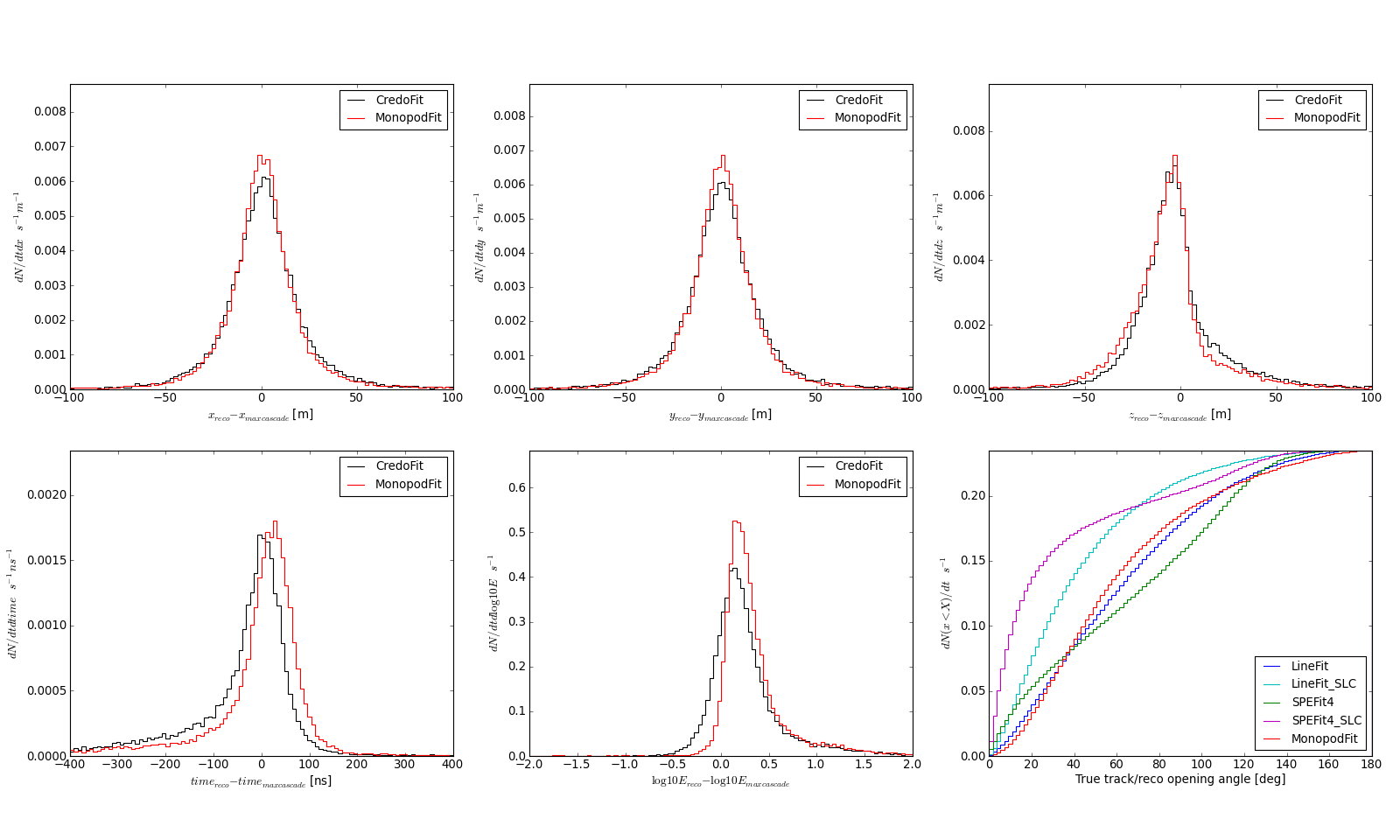Background composition¶
Geometry and shower energy¶
Energy spectrum of cosmic-ray primaries at various cut levels. The primaries aregrouped by nuclear charge using the scheme of Hoerandel.
Zenith angle of cosmic-ray showers.
Distance of closest approach of the shower axis to the detector center. Heavy-primaryshowers pass the L3 cuts in large numbers only near the edges of the detector.
Stochastic energy losses¶
The background at L3 is dominated by isolated stochastic energy losses from atmospheric muons. These can be much brighter than the parent track, mimic a true neutrino-induced cascade; one way to characterize this mimicry is to bin the energy losses along the track and calculate the ratio of the energy losses in the brightest track segment to the total energy loss in the detector volume:
\[k \equiv \frac{E_{max}}{\sum_i E_i}\]
See also
A study of cascade-like muon events by Marcel Usner
(Source code, png, hires.png, pdf)

